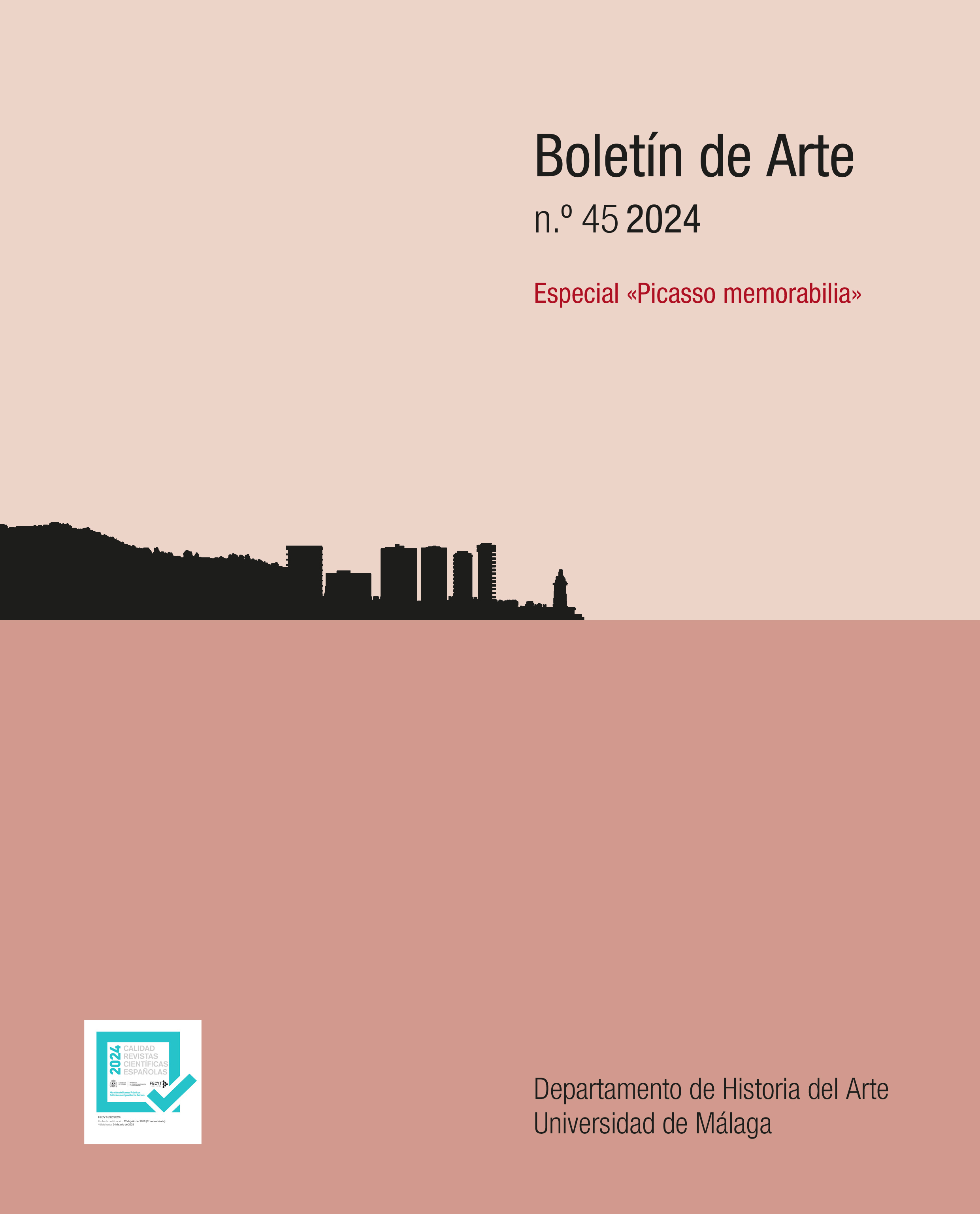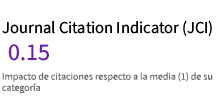Gender complexity in Picasso’s Les Demoiselles d’Avignon: The precedent of the Sleeping Hermaphroditus sculpture
DOI:
https://doi.org/10.24310/ba.45.2024.16207Keywords:
Picasso, Gender, Art history, Les Demoiselles d’Avignon, Hermaphroditus, Hellenistic art, Trans studies, Intersex studies, GenderfluidityAbstract
This essay visually reinterprets details of the two central figures in Picasso’s breakthrough, epochal painting, Les Demoiselles d’Avignon (1907), to propose that these bodies, long presumed female, also can be interpreted as «gender-flexible» and genderplural. Such a strategy is shown to be connected to Picasso’s lifelong interest in bi-directional figures, as analyzed by Leo Steinberg. The connection is explored in depth with reference to Version B of Picasso’s Women of Algiers series. All of this material is then recast as deriving from the precedent of the famous classical Sleeping Hermaphroditus sculpture, which Picasso likely saw at the Louvre and at the Prado (in its copy, commissioned by Velázquez), and as allusions in works by other artists.
Downloads
Metrics
Publication Facts
Reviewer profiles N/A
Author statements
Indexed in
-
—
- Academic society
- N/A
- Publisher
- Universidad de Málaga.
References
Ajootian, Aileen (1990), «Natus Diformis: Hermaphrodites in Greek and Roman Art», PhD diss., Bryn Mawr College.
Ajootian, Aileen (1997), «The Only Happy Couple: Hermaphrodites and Gender», in Koloski-Ostrow, Ann Olga and LYONS, Claire L. (eds.), Naked Truths: Women, Sexuality, and Gender in Classical Art and Archaeology, Routledge, London and New York, pp. 220-42.
Baedecker, Karl (1891), Baedeker’s Paris and Its Environs with routes from London to Paris, Baedeker, Leipsic. In: <https://www.digitale-sammlungen.de/en/view/bsb11606535?page=152,153&q=%28%22borghese+hermaphrodite%22%29>.
Bandmann, Günther (1965), Picasso: Les Demoiselles d’Avignon, Philipp Reclam, Stuttgart, June.
Baker, George (2011), «The Squatter: Reconsidering Picasso’s Les Demoiselles d’Avignon», in Gaitán, Juan A. (ed.), Cornerstones, Witte de With Publishers, Rotterdam / Sternberg Press, Berlin, pp. 8-36.
Beemyn, Genny (2014), «From a Phenomenon to an Empire: The Anti-Transgender Backlash», in Transgender History in the United States. https://www.umass.edu/stonewall/sites/default/files/Infoforandabout/transpeople/genny_beemyn_transgender_history_in_the_united_states.pdf. An unabridged version of the «United States History» chapter in Erickson-Schroth, Laura (ed.), Trans Bodies, Trans Selves, A Resource for the Transgender Community, Oxford University Press, New York and London.
Blier, Suzanne Preston (2019), Picasso’s Demoiselles: The Untold Origins of a Modern Masterpiece, Duke University Press, Durham, NC.
BRENSON, Michael (1989), «Picasso and Braque, Brothers in Cubism», The New York Times, September 22, pp. C1 and C30. In: <https://www.nytimes.com/1989/09/22/arts/picasso-and-braque-brothers-in-cubism.html>.
BURGESS, Gelett (1910), «Wild Men of Paris», Architectural Record, vol. 27, n.º 5 (May), pp. 400-14.
BOIS, Yve-Alain (1988), «Painting As Trauma», in GREEN, Christopher (ed.), Picasso’s Les Demoiselles d’Avignon, Cambridge University Press, Cambridge, UK, pp. 31-54.
Chave, Anna (1994), «New Encounters with Les Demoiselles d’Avignon: Gender, Race, and the Origins of Cubism», The Art Bulletin, vol. 76, n.º 4 (December), pp. 596-611.
DUNCAN, Carol (1989), «The MoMA’s Hot Mamas», Art Journal, vol. 48, n.º 2 (Summer), pp. 171-178.
DUNCAN, Carol (1990), «Letter to the Editor», Art Journal, vol. 49, n.º 2 (Summer), p. 207.
ETTINGER, Tom (1989), «Picasso: The Pictorial Structure of Cubism and the Body-Image Construct», Psychoanalysis and Contemporary Thought, vol. 12, n.º 2, pp. 147-263.
Fusco, Coco (2020), Interview, «Suzanne Blier with Coco Fusco», The Brooklyn Rail, The New Social Environment series #91 (July 22), <https://m.youtube.com/watch?v=ZrniUIqf2Gw>.
Garland, Robert (2010), The Eye of the Beholder: Deformity and Disability in the Graeco-Roman World, 2nd ed., Bristol Classical Press, London.
Getsy, David J. (2022), «How to Teach Manet’s Olympia after Transgender Studies», Art History, vol. 45, no. 2, April 26, pp. 342-369. DOI: https://doi.org/10.1111/1467-8365.12647.
Green, Christopher (2011), «Pablo Picasso: More Than Pastische, 1906-36», in Green, Christopher and Daehner, Jens M. (eds.), Modern Antiquity: Picasso, de Chirico, Léger, Picabia, The J. Paul Getty Museum, Los Angeles.
Jombert, Charles-Antoine (1755), Méthode pour apprendre le dessein, self-published, reprinted in 1784+, Paris. In: <https://archive.org/details/gri_33125008513083/page/n329/mode/2up>.
KAHNWEILER, Daniel-Henry (1952), «Huit Entretiens avec Picasso», Le Point, vol. XLII, October, pp. 22-30.
KUSPIT, Donald (2006), «New Forms For Old Feelings: The First Decade», in A Critical History of 20th-Century Art, Chapter 1, part 1 & 2, online at artnet, January 10, <http://www.artnet.com/magazineus/features/kuspit/kuspit1-10-06.asp>.
LIMING, Sheila (2017), «Romancing the Interstitial: Howe, Balzac, and Nineteenth-Century Legacies of Sexual Indeterminacy», Nineteenth-Century Literature 72, n.º 3 (December), pp. 311-37.
LORETI, Sylvia (2020), «Dealing With Difference: The Iberian-African Connection in Les Demoiselles d’Avignon», in Brockington, Grace and Miller, C.F.B. (eds.), Of Modernism: Essays in Honour of Christopher Green, Paul Holberton, London, pp. 228-47.
MAILER, Norman (2014), Portrait of Picasso as a Young Man, Atlantic Monthly Press, Boston and New York.
Matilla, José Manuel and Portús, Javier (eds.) (2004), El grafoscopio: Un siglo de miradas al Museo del Prado (1819-1920), exh. cat., Museo Nacional del Prado, Madrid.
MONTUA, Gabriel and WEGENSCHIMMEL, Anna (eds.) (2021), Picasso & Les Femmes d’Alger, exh. cat., Nationalgalerie – Staatliche Museen zu Berlin / Hirmer Verlag, Berlin.
ØSTERMARK-JOHANSEN, Lene (2010), «Between the Medusan and the Pygmalian: Swinburne and Sculpture», Victorian Literature and Culture, vol. 38 (March), pp. 21-37.
Palau i Fabre, Josep (1981), Picasso: The Early Years, 1881-1907, trans. Kenneth Lyons, Rizzoli, New York.
Poggi, Christine (2014), «Double Exposures: Picasso, Drawing, and the Masking of Gender, 1900-1906», in Braun, Emily, and Rabinow, Rebecca (eds.), Cubism: The Leonard Lauder Collection, Metropolitan Museum of Art, New York / Yale University Press, New Haven and London, pp. 28-39, notes pp. 302-03.
Poggi, Christine (2019), «Stage at the Edge of the Sea: Picasso’s Scenographic Imagination», The Art Bulletin, vol. 101, n.º 1, pp. 90-118.
Pool, Phoebe (1965), «Picasso’s Neo-classicism: First Period, 1905-6», Apollo, vol. 81, February, pp. 122-27.
Rabinow, Rebecca (2011), «Discovering Modern Art: The Steins’ Early Years in Paris, 1903-1907», in Bishop, Janet, Debray, Cecile and Rabinow, Rebecca (eds.), The Steins Collect: Matisse, Picasso, and the Parisian Avant-Garde, exh. cat., San Francisco Museum of Modern Art / Yale University Press, New Haven and London.
Rabinow, Rebecca (2012), «‘I am having the time of my life’: Leo Stein in Paris, 1903-6», Lecture, Metropolitan Museum of Art, New York. In: <https://www.youtube.com/watch?v=dmR-JjBqiLg>.
ROSENBLUM, Robert (1986), «The Demoiselles: Sketchbook N.º 42, 1907», in GLIMCHER, Arnold and GLIMCHER, Marc (eds.), Je suis le cahier: The Sketchbooks of Picasso, exh. cat., The Pace Gallery / Atlantic Monthly Press, Boston and New York, pp. 53-79.
RUBIN, William (1994), «The Genesis of Les Demoiselles d’Avignon», in RUBIN, William, SECKEL, Hélène, and COUSINS, Judith (eds.), Les Demoiselles d’Avignon, Studies in Modern Art, Special Issue 3, The Museum of Modern Art, New York, pp. 12-144.
SALMON, André (2005 [1912]), «An Anecdotal History of Cubism», in Gersh-Nesic, Beth S. (trans.), André Salmon on French Modern Art, Cambridge University Press, Cambridge, UK and New York, pp. 50-60 [«Histoire Anecdotique du Cubisme», in La Jeune Peinture Française, Société des Trente / Albert Messein, Paris, pp. 41-61].
SCHIFF, Karen (2022), «Gender Flexibility in Picasso’s Les Demoiselles d’Avignon: The Cipher of the Equivocating Ears», in Core Program Yearbook, Museum of Fine Arts, Houston / Glassell School of Art, Houston, pp. 34-51.
SEAGROATT, Heather (2002), «Swinburne Separates the Men from the Girls: Sensationalism in Poems and Ballads», Victorian Literature and Culture, vol. 30, n.º 1, pp. 41-59.
Shiff, Richard (2022), «Introduction», in Schwartz, Sheila (ed.), Picasso: Selected Essays, Leo Steinberg, University of Chicago Press, Chicago and London, pp. xi-xvi.
SMITH, George (2022), The Artist-Philosopher and Poetic Hermeneutics: On Trauma, Routledge, New York and London.
Steinberg, Leo (1972), «The Algerian Women and Picasso at Large», in Other Criteria: Confrontations with Twentieth-Century Art, Oxford University Press, London and New York, pp. 125-234.
Steinberg, Leo (1990), «Letter to the Editor», Art Journal, vol. 49, n.º 2 (Summer), p. 207.
Steinberg, Leo (2022 [1988]), «The Philosophical Brothel», in Schwartz, Sheila (ed.), Picasso: Selected Essays, Leo Steinberg, The University of Chicago Press, Chicago, pp. 71-116 [October, vol. 44 (Spring), pp. 7-74; see also note 10].
Trimble, Jennifer (2018), «Beyond Surprise: Looking Again at the Sleeping Hermaphrodite in the Palazzo Massimo», in Longfellow, Brenda and Perry, Ellen E. (eds.), Roman Artists, Patrons, and Public Consumption: Familiar Works Reconsidered, University of Michigan Press, Ann Arbor, pp. 13-37.
von Stackelberg, Katharine T. (2014), «Garden Hybrids: Hermaphrodite Images in the Roman House», Classical Antiquity, vol. 33, n.º 2, pp. 395-426.
WERTH, Margaret (1997), «Representing the Body in 1906», in McCULLY, Marilyn (ed.), Picasso: The Early Years, 1892-1906, exh. cat., National Gallery of Art, Washington, DC / Yale University Press, New Haven and London, pp. 277-287.
WOLLHEIM, Richard (1984), Painting as an Art, The A. W. Mellon Lectures in the Fine Arts, Bollingen Series, vol. XXXV, n.º 33, Princeton University Press, Princeton, New Jersey.
ZERVOS, Christian (1942), Pablo Picasso: Vol. II*-Oeuvres de 1906 à 1917, catalogue raisonée, vol. 2, part 1, Cahiers d’Art, Paris.
ZERVOS, Christian (1973), Pablo Picasso: Vol. XXVI-Supplément aux années 1907-1909, catalogue raisonée, vol. 26, Cahiers d’Art, Paris.
Published
How to Cite
Issue
Section
License
Copyright (c) 2024 KAREN SCHIFF

This work is licensed under a Creative Commons Attribution-NonCommercial-ShareAlike 4.0 International License.
Todos los contenidos publicados en la revista Boletín de Arte están sujetos a la licencia Creative Commons Reconocimento-NoComercia-Compartirigual 4.0 cuyo texto completo puede consultar en <http://creativecommons.org/licenses/by-nc-sa/4.0>

Los/as autores/as cuyas contribuciones sean aceptadas para su publicación en esta revista conservarán el derecho no exclusivo de utilizar sus contribuciones con fines académicos, de investigación y educativos, incluyendo el auto-archivo o depósito en repositorios de acceso abierto de cualquier tipo.
La edición electrónica de esta revista esta editada por la Editorial de la Universidad de Málaga (UmaEditorial), siendo necesario citar la procedencia en cualquier reproducción parcial o total.












4.png)
